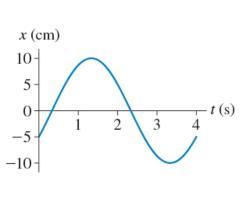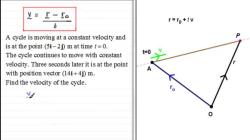How to calculate current amplitude?
To calculate the current amplitude, you'll need to measure the peak value of the current waveform. The amplitude of a waveform is the maximum displacement from its equilibrium position. In the case of electrical current, this is the maximum value of the current during one complete cycle.
Here are the general steps to calculate the current amplitude:
Measure the Current:
- Use a current measurement device, such as a current clamp or a multimeter set to measure current, to measure the current flowing through the circuit. Ensure that the measurement device is appropriately connected in series with the circuit.
Observe the Waveform:
- If the current is not a simple DC (direct current) value but an AC (alternating current) waveform, observe the waveform on an oscilloscope. AC waveforms oscillate between positive and negative values, and the amplitude is measured from the zero line (or baseline) to the peak of the waveform.
Identify the Peak Value:
- On the oscilloscope or using the measurement device, identify the peak value of the current waveform. The peak value is the maximum positive or negative excursion from zero.
Calculate Amplitude:
The current amplitude (I<sub>amplitude</sub>) is half of the peak-to-peak value for a symmetrical AC waveform. For a sinusoidal waveform, it is simply the peak value (assuming it's the positive half of the cycle). Mathematically, you can express this as:
For a sinusoidal waveform, where you directly measure the peak value, the amplitude is:
Note: In the case of a full AC cycle (from positive peak to negative peak), the peak-to-peak value should be used.
Remember that the units of current amplitude will be the same as the units of the current measurement you took (e.g., Amperes).
Always exercise caution when working with electrical circuits, especially when making measurements. Ensure that you use appropriate safety measures and follow proper procedures to avoid injury and damage to equipment. If you're unsure or dealing with complex electrical systems, consider consulting with a qualified electrical professional.
Calculating Current Amplitude
There are two main methods for calculating current amplitude, depending on the context:
1. From Circuit Analysis:
In circuits, current amplitude can be calculated using various methods depending on the circuit elements and the type of current (AC or DC). Here are some common approaches:
- Ohm's Law: For DC circuits with known voltage and resistance, the current amplitude can be directly calculated using Ohm's Law:
I = V / R, where I is the current, V is the voltage, and R is the resistance. - Impedance Formula: For AC circuits with complex impedances due to capacitors and inductors, the current amplitude can be calculated using the impedance formula:
I = V / Z, where I is the current, V is the voltage, and Z is the impedance. The impedance depends on the frequency, resistance, inductance, and capacitance. - Peak-to-Peak Amplitude: This is the simplest method for measuring the amplitude of any waveform, including AC current. It involves measuring the vertical distance between the maximum and minimum points of the waveform.
- Root Mean Square (RMS) Amplitude: This method provides the effective value of a varying current over time and is often used for power calculations. It's calculated as the square root of the average of the squared instantaneous current values.
2. Using Measuring Equipment:
Current amplitude can be directly measured using various instruments like:
- Ammeter: This instrument directly measures the current flowing through a circuit. It can be used for both DC and AC currents.
- Oscilloscope: This instrument can display the waveform of the current, allowing you to visually measure the peak-to-peak amplitude.
- Signal Analyzers: These advanced instruments can measure various parameters of a signal, including its amplitude, frequency, and power spectrum.
Additional Notes:
- The specific method used to calculate current amplitude depends on the available information and the desired result.
- For AC circuits, it's important to distinguish between peak, peak-to-peak, and RMS amplitudes.
- Always consult the user manuals of your measuring equipment for proper operation and interpretation of results.
By understanding the different methods and choosing the appropriate one based on your situation, you can accurately calculate current amplitude in various contexts.












